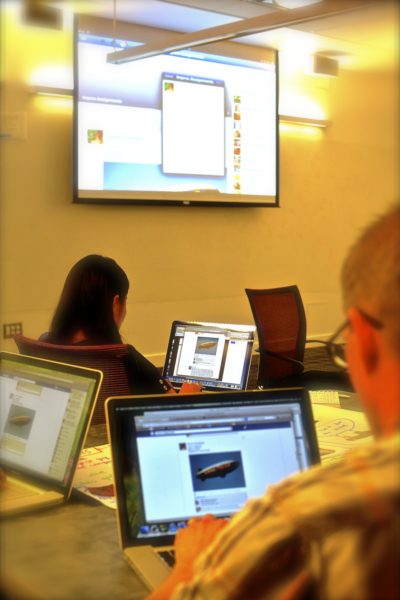The videos below represent two different ways that I’ve attempted to capture typical rapid prototyping processes that I’ve facilitated in my Interdisciplinary Improvisation course and in real-world Projects courses at the Master of Digital Media Program in Vancouver. In my first prototype, the photo and video documentation attempt to show more of a collage of prototyping techniques used, for different pedagogical reasons.
The second video below is another attempt to show rapid prototyping techniques with some similar footage as the previous video and some new. This time I’ve inter-connected the prototyping techniques to show how they flowed within 1 activity and 3 projects.
- The first prototyping process—the Dream House—is an activity facilitated in my Interdisciplinary Improvisation course. It requires learners to come to class having drawn their dream house. They then work in small groups and scope specific features from each individual dream house in order to physically prototype one combined home. They are given time constraints and usually given time for review and then continue to build their next iteration. Within this cycle of co-construction, they learn aspects of Agile methodology, scope, compromise and negotiation.
- The three projects that follow, are all real-world projects with real-world clients that we’ve had at the MDM Program. In each I attempt to link different prototyping techniques together to show how paper and physical prototyping phases contribute to the digital prototyping phase.
My take-away from rapidly prototyping photos and videos together from our archives, is that it is difficult to capture and document the nuances and repetitive cycles of prototypes, as they are refined along the way. Cycles of change sometimes occur so rapidly for every single feature of a digital media prototype, in what my colleague Larry Bafia refers to as a process of KFC (Keep-Fix-Change), that it’s hard to keep up with ‘versioning’. There is also an unpredictable back and forth between different types of analog and digital prototyping techniques, depending on the feature, and on problems with the design that inevitably emerge. Moving forward, I would like to capture (video and photo) a few features in a prototypical process. I’m particularly interested in all of those activities that contribute to the user interface of a digital media application. We don’t always ‘see’ what informed the choices of a particular UI design. The overall defined (and emergent) user experience (UX) informs the UI, and the UX is informed by a collaborative exploration of who the team (including the client) imagines the application to be for. Thus Personas, a Day in the Life of a typical user, Empathy Maps, Mood Boards, Concept art, wire framing, UI flow, User Testing, even focus groups and prior research are just some examples of what might influence the invention, evolution, and refinement of features that make up a UI prototype. While many of these aspects are documented in design documents through images, photos, video and text, a Prototype’s Story or even the story of a feature of a prototype like the User Interface, is worth telling visually. In doing so, I believe teams can better understand and document the choices that they make that inform the iterations of a prototype, for their own benefit and that of the client.


Leave a Reply